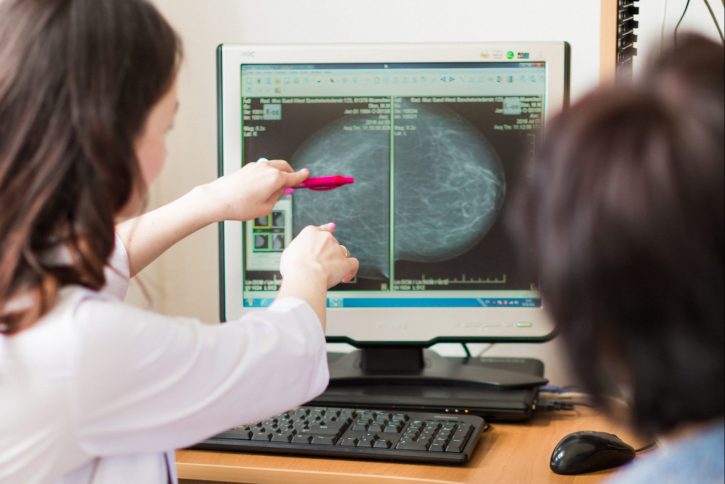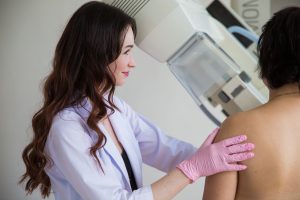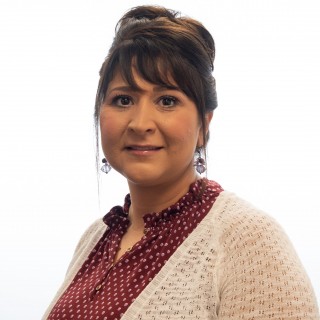
When you receive a mammogram, your doctor will compare the amount of fatty tissue in your breasts to the amount of fibrous tissue. Dense breasts have more fibrous tissue than fatty tissue. The makeup of your breast tissue may change over time, with some women’s breasts becoming less dense as she gets older.
Breast density cannot be determined by a physical exam – only by a mammogram.
Why Breast Density Matters
Breast density is determined when you have a mammogram, based on where your breast tissue makeup falls on a 4-level density scale.
A – Almost entirely fatty tissue (10% of women)
B – Some scattered fibrous tissue (40% of women)
C – Heterogeneously dense – more areas of fibrous tissue (40% of women)
D – Extremely dense (10% of women)
Women with heterogeneously dense (C) or extremely dense (D) breast tissue may have a higher risk of breast cancer. It is unclear why there is a link between breast density and breast cancer.
Dense breast tissue makes it more difficult for radiologists to spot cancer on a mammogram. Both dense breast tissue and cancerous or benign lumps appear white, while fatty tissue looks black. Although a mammogram of dense breasts may be less accurate, it is still important that you continue to receive these screenings.
Symptoms
If you are unsure whether or not you have dense breasts, ask your healthcare provider. If you do have dense breasts, you can decide with your doctor which, if any, additional tests are necessary.
Be sure to share additional risk factors – including family history of breast cancer, previous radiation exposure and personal medical history – with your healthcare provider. If you have other factors that put you at high risk of breast cancer, your doctor may order an annual breast ultrasound or magnetic resonance imaging (MRI).
Continue to get mammograms as suggested by your healthcare provider. Whether you have dense breasts or not, a mammogram is the most effective way to find breast cancer.
Understanding Your Breast Cancer Risk
While many risk factors for cancer are outside of your control, there are some choices you can make to lower your chances of getting cancer:
- Exercise regularly – 3-4 times per week
- Stop smoking or using tobacco products
- Limit alcohol usage
- Eat a healthy diet, high in fruits and vegetables
- Breastfeed, if you can

Early detection is a key part of improving breast cancer survival. Be proactive by getting an annual mammogram, starting at age 40, and completing regular self-exams of your breasts. If you notice any changes in your breasts, contact your healthcare provider.
Navigating a health concern can be daunting. With the help of our women’s health navigator, you don’t have to do it alone. Your nurse navigator will be by your side every step of the way, providing support, education and guidance through each part of your journey.
